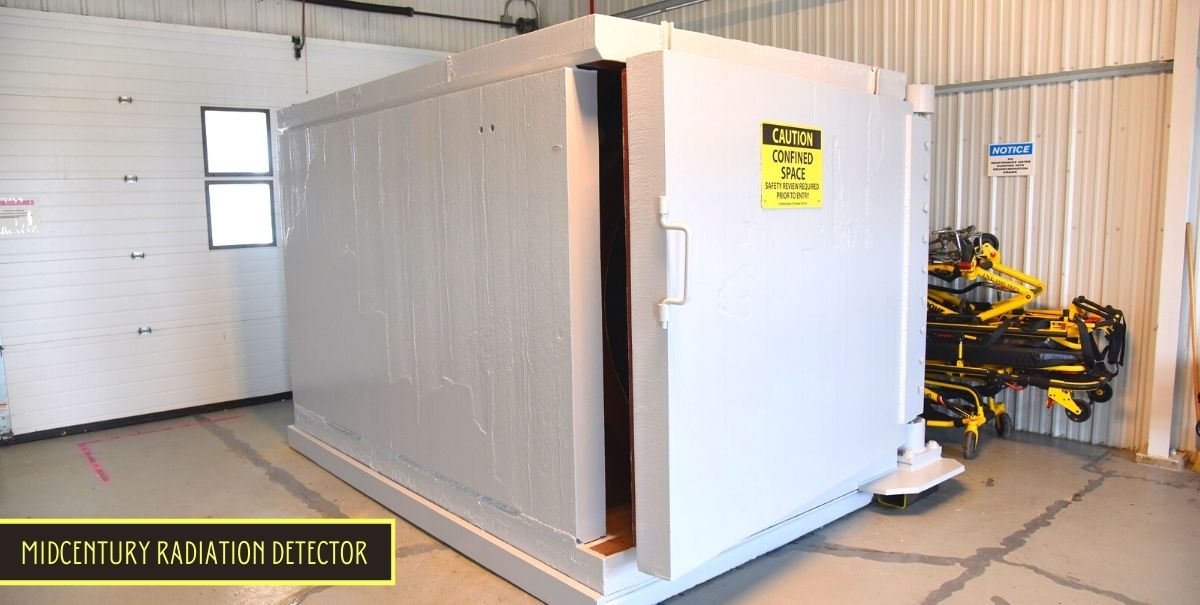Much of the research occurring at Idaho National Laboratory focuses on science, rather than history. However, the INL site is also home to a rich history that has shaped the lab’s work. INL’s history lives on and informs its current operations in many surprising forms, including a behemoth midcentury radiation detector salvaged for modern use because of its invaluably rare material composition.
During World War II, the U.S. Navy used the land where the INL desert Site complex now sits for testing Pacific Fleet guns. In 1949, the Atomic Energy Commission sought an ideal location for its new brainchild, the National Reactor Testing Station, which would explore the peacetime applications of nuclear technology. They selected the Arco Desert testing grounds for this globally significant research.
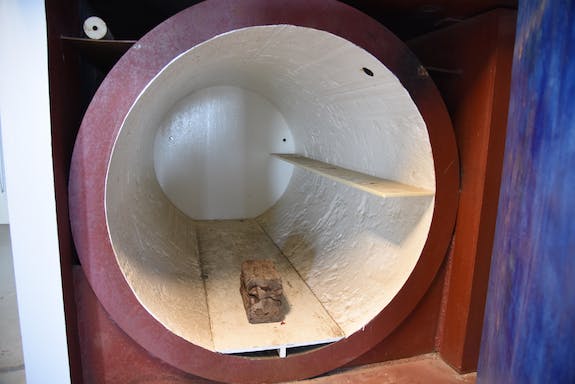
As the grounds were reshaped to accommodate the new goals of the National Reactor Testing Station, measuring radioactivity became a key concern. Several health physicists ended up salvaging the lining of a naval gun barrel to solve this problem. The lining was made of prewar steel, which is free of manmade radiation and reduces background radiation to an absolute minimum. Using this steel, they built a large whole-body counter.
In 2018 following demolition of the surrounding original 1951 Radiological and Environmental Sciences Laboratory, concerns arose about the counter sitting outside, unused and exposed to the elements. INL’s Environment, Safety Health & Quality group were among the experts who began considering ways to repurpose this historical artifact and tool. “This is a part of the lab’s history, and if we can take that little piece of the past and use it to help us in the future, that’s a win for everyone,” said Chere Morgan, chief operations officer for the Environment, Safety Health & Quality group.
This ultimately led to successfully relocating the whole-body counter to a large indoor facility and repurposing it to measure the background radiation of large samples or items.
Radiological and historical context for repurposing
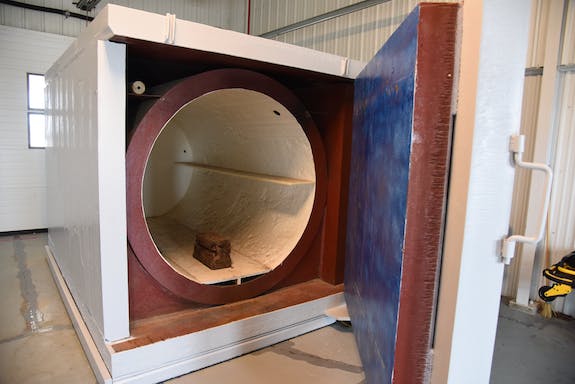
Mary Scales English, of INL’s Cultural Resources department, worked with radiological control experts to document the significance of the whole-body counter. The team proposed that retaining it was vital for posterity due to its unique characteristics. Moreover, a resource analysis revealed that keeping it at INL had strong financial and radiological benefits.
“The process for documenting the whole-body counter’s removal would have involved documenting its use, photographing it and ensuring that we had everything in order before removing it,” said Scott Lee, Cultural Resources manager. “Both the effort required to remove it and its historical significance made the decision to keep the whole-body counter on-site and repurpose it an easy one.”
The efforts to retain the whole-body counter received acknowledgement from Idaho’s State Historic Preservation Office. The office noted that what INL did with the whole-body counter was exactly what agencies should be doing to preserve and reuse historically significant objects.
In addition to the complex historical preservation angle, moving and reusing the whole-body counter had to be justified from a radiological and budgetary standpoint.
After conducting several tests, radiological control experts demonstrated what they had known from the outset: Repurposing the whole-body counter was a radiologically sound undertaking.
The physical move
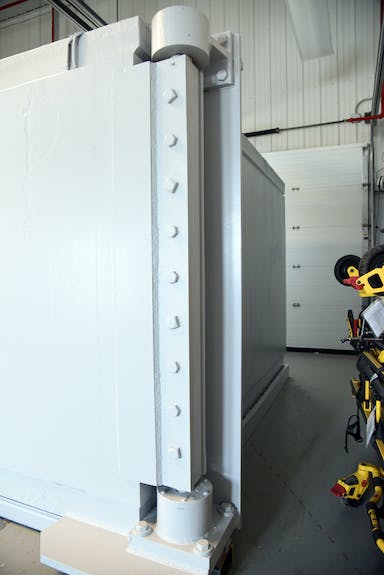
Once the move was approved, the lab’s decontamination and decommissioning (D&D) team stepped in for the literal heavy lifting.
The whole-body counter weighs 55 tons – roughly the weight of nine adult elephants. According to Herb Pollard, the D&D manager in charge of the project, this weight reaches the upper limit of what his team and their equipment would typically move.
Many senior D&D team members had retired shortly before the moving process. Incoming trainees and the remaining senior staff had to jump right into this difficult project, but they rose to the challenge. The D&D team successfully relocated the whole-body counter into an ambulance bay on the INL campus, which was one of the few facilities with enough space for the massive structure.
“Once we got the whole-body counter into the ambulance bay and leveled, we ran into another issue,” Pollard said. “We had to adjust the door, which weighed 15,000 pounds alone, because it had shifted during the move and was jamming.” They ended up also repainting and refurbishing the whole-body counter.
The future of the whole-body counter
Moving forward, the project team will set up the new and improved whole-body counter and establish the critical procedures necessary to ensure its continued success.
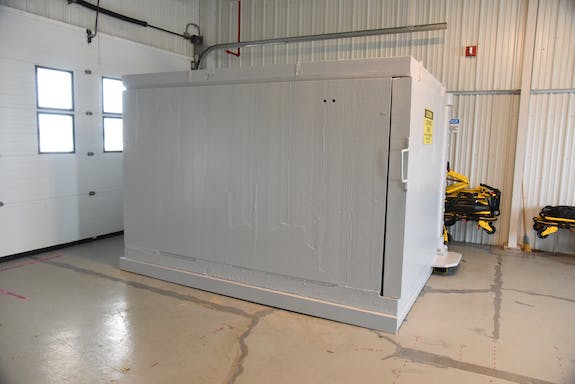
Radiological control experts will develop a process designed to help the lab use the whole-body counter as an ultra-low background shield. This shield removes natural and human-made background radiation. When combined with state-of-the-art instrumentation, the whole-body counter can detect and characterize possible residual radioactive material on or in a piece of equipment or material destined for reuse or disposal.
Once the items are deemed safe, they can then be released for reuse or disposal through standard methods.
“The whole-body counter is a crucial part of the lab’s history, and it was incredible to watch such a talented and dedicated team come together to make this repurposing effort successful,” said Morgan.
According to Brad Schrader, a radiological expert at INL, steel from before World War II “is incredibly rare nowadays. It’s quite incredible to still have some in use here at INL.”

